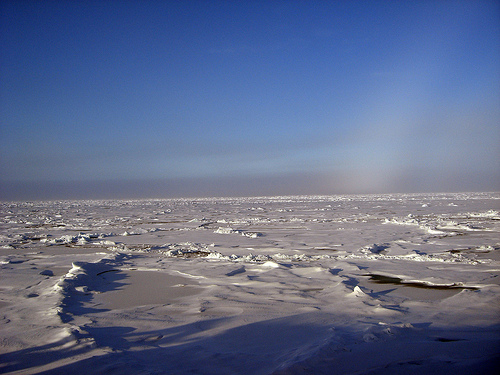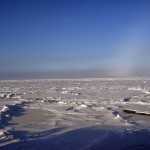
Melting Permafrost Could Accelerate Global Warming
 A new report from the United Nations Environment Programme warns that melting permafrost could exacerbate the risks associated with global warming by releasing vast amounts of Carbon Dioxide (CO2) and methane into the atmosphere. The report says that as global warming occurs, these emissions could heighten the challenges posed by climate change.
A new report from the United Nations Environment Programme warns that melting permafrost could exacerbate the risks associated with global warming by releasing vast amounts of Carbon Dioxide (CO2) and methane into the atmosphere. The report says that as global warming occurs, these emissions could heighten the challenges posed by climate change.
Countries greatly affected by this are those with large areas of permafrost lands including the United States, Canada, Russia and China. The report’s conclusions mirror the findings of a similar report in September.
Permafrost, the frozen ground covering approximately 24% of the Northern Hemisphere, acts as a barrier, keeping down frozen carbon deposits below the surface. The top layer naturally thaws and refreezes as the seasons change. The worry is that as global temperatures rise due to global warming, deeper layers of the permafrost will thaw, causing more greenhouse gases to be released into the atmosphere.
The problem then is that these gases cause further temperature increases, causing more permafrost to melt, releasing more of these gases, creating a snowball effect.
The report released warns that increased permafrost melting could release large portions of the 1700 billion tons of carbon that is stored below this northern permafrost. This release would start off slow and increase the next 200 years, causing both long term and short term problems.
The report notes that temperatures in high latitude locations, like the Arctic Circle, may rise nearly twice as fast as the global average. A 3 degree Celsius increase in global temperatures would then melt 30-85% of top level permafrost. By comparison, the UN recently predicted that world temperatures could increase 4C by the end of the century.
This will cause permanent change or irreversible damage for the Earth. Increased fires and erosion, and overall shrinking of wetlands and lakes as the permafrost zone shrinks are just a few of the environmental changes that will occur with melting permafrost. Critical infrastructure will susceptible to these changes, causing social and economic damage.
The report concludes with several policy recommendations to mediate the economic, social, and environmental impacts of melting permafrost. The report suggests establishing a special report delving into further detail analyzing and projecting how CO2 and methane emissions from melting permafrost affect current climate change models.
National Permafrost Monitoring should be increased, with individual countries expanding scientific research and monitoring of permafrost.
Most of all, nations need to prepare for the coming risks. Nations that will heavily affected like the United States should develop plans and evaluate the risks, potential damage, and costs that permafrost degradation will cause.
It’s a fact that increased permafrost melting contributes to the long list of problems Climate Change creates as a national security risk. At the American Security Project, we’ve written at length about the national security challenges posed by climate change.






[…] between 2.7 and 4.5 degrees in the last 30 years. As a result, permafrost layers are melting. A 3 degree Celsius increase in global temperatures could melt 30-85% of the top permafrost layers. If these top […]